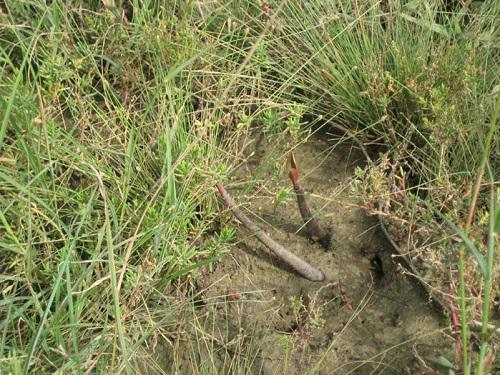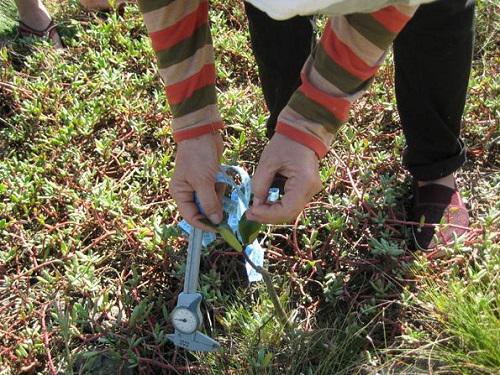Nguyen Thi Thanh Thuy
Other projects
15 Sep 2006
Restoration of Mangrove Forest and Improving the Awareness of the Local Communities on the Protection of Mangrove Ecosystems
This project aims to extend the model of community based mangrove restoration focusing on fallow shrimp-farming ponds to utilise the areas for extension shrimp culture in mangrove forest.

One month-old shoot of mangrove (Area 3).
Mangrove forest is an important ecosystem in tropical coastal areas regarding to living places, nursery areas of many valuable aquatic species, of which 90% of fisheries products come from there. In addition, mangrove forests have eco-tourism potential. Therefore, restoration of mangrove forest leads to increased ecosystem and species biodiversity plus the protection of sensitive coastal zones where many poor people live. The following actions are planned in the national strategy: strengthening the knowledge base; sustainable use of mangrove resources, conservation of mangrove habitats and rehabilitation of degraded mangrove ecosystems.

As limited budget, the first project supported by Rufford Small Grant could not meet the local volunteer’s requirement. However, through project’s activities with positive results, the local shrimp culture farmers have understood more negative consequence of destroying mangroves to environment and realized that no one but they themselves suffered from the negative impacts. The model of extension shrimp or crabs culture in mangrove forest has been applied in the some countries such as Thailand, Indonesia... Therefore, restoration of mangroves in fallow shrimp-farming ponds would improve the environment in the area, consequently, give the local farmers more chances to utilize the areas for extension aquaculture in sustainable way.
To carry out the project, the following activities will be done:
- Meeting with local authority to inform purposes of the project;
- Meeting with local communities regarding project’s activities;
- Surveying the areas and selecting volunteers participating the project;
- Surveying/ordering/collecting mangrove propagules secourse from local areas and/or from Can Gio mangrove forest;
- Training volunteers to plant mangrove propagules;
- Managing monthly in term of survival, growth rate the replanted areas;
- Workshops for lessons/experiences drawn from project’s activities;
- Evaluation and report submission.